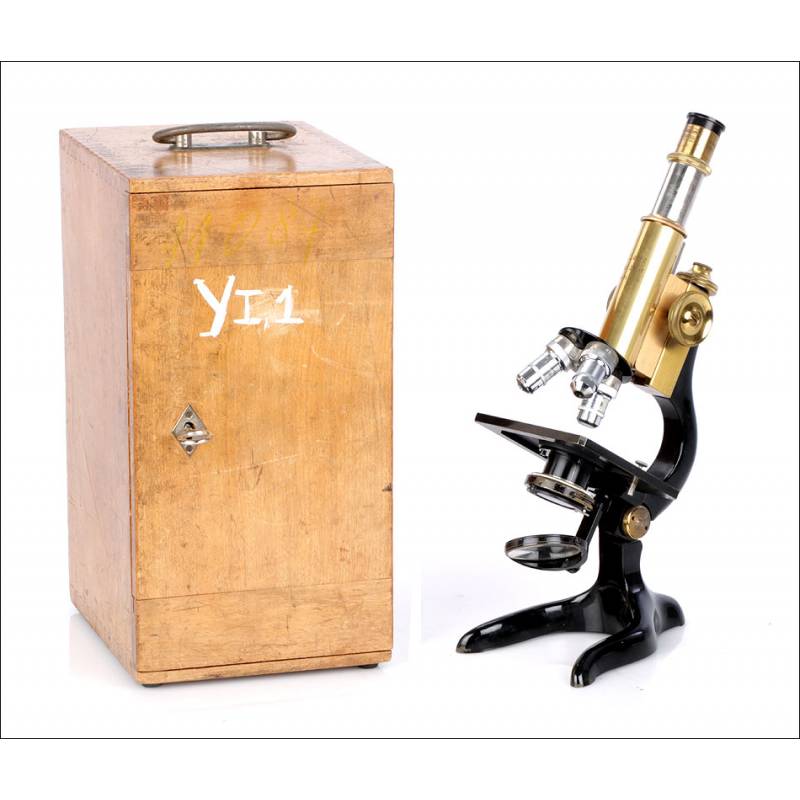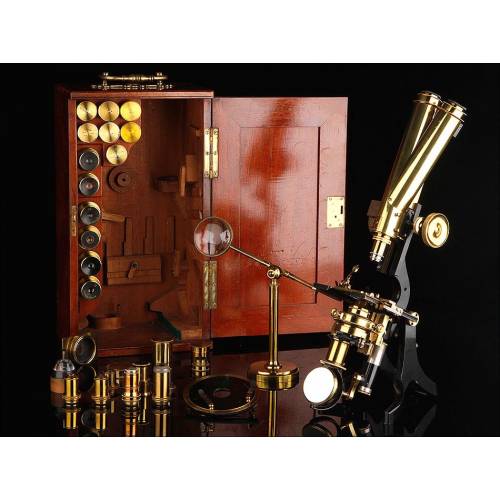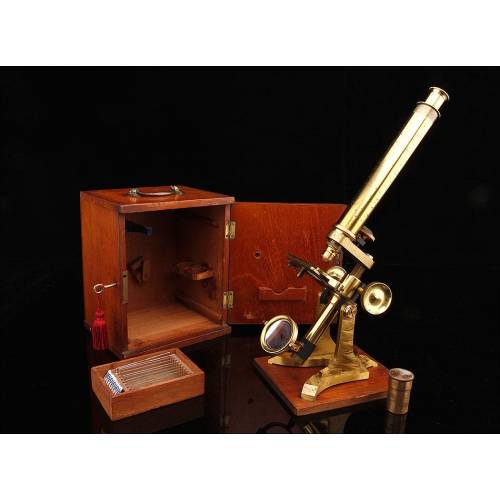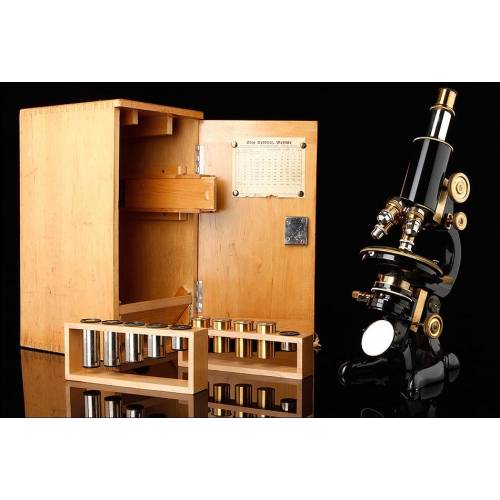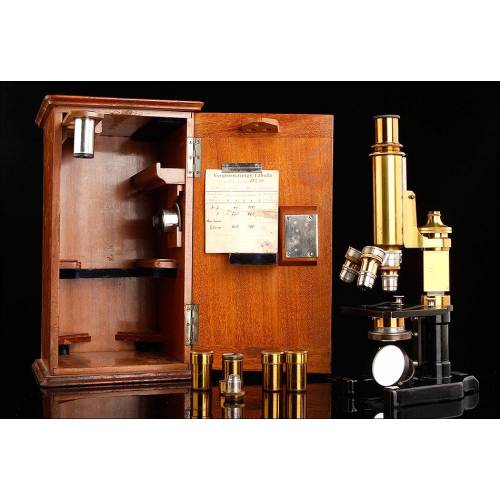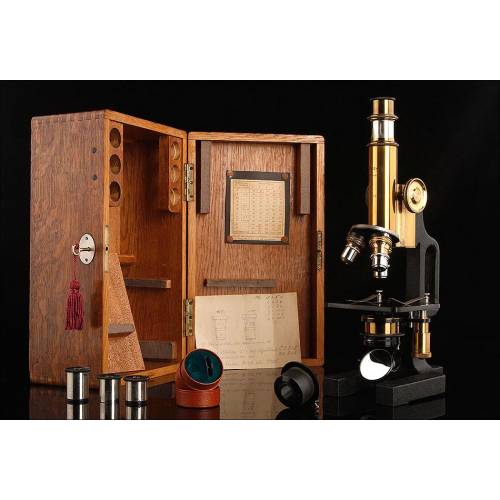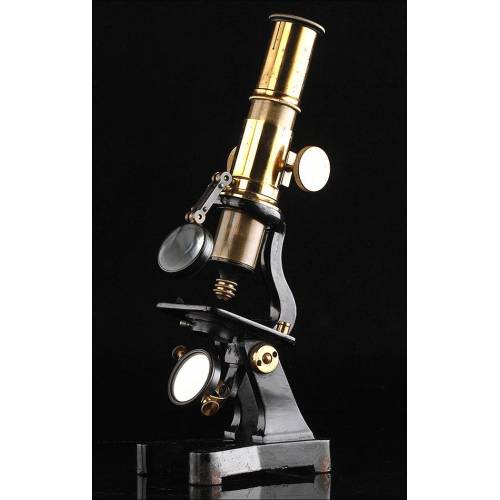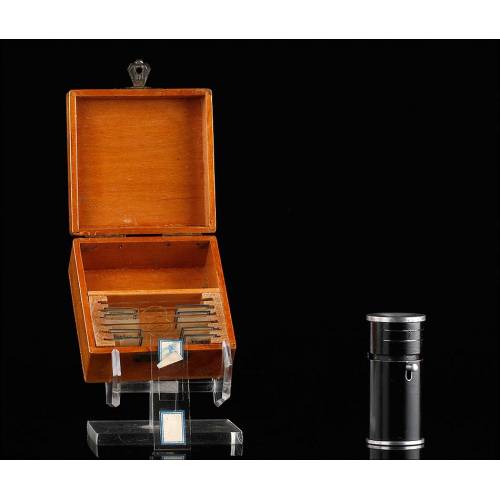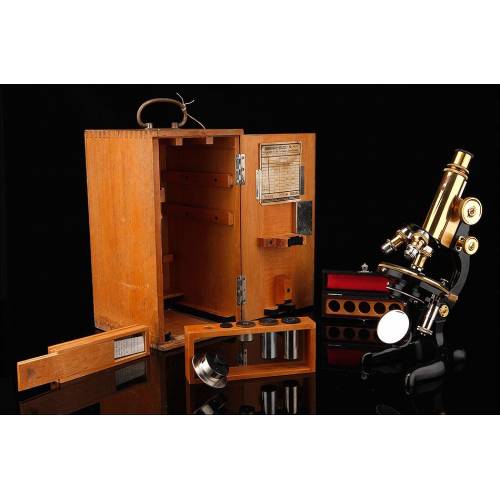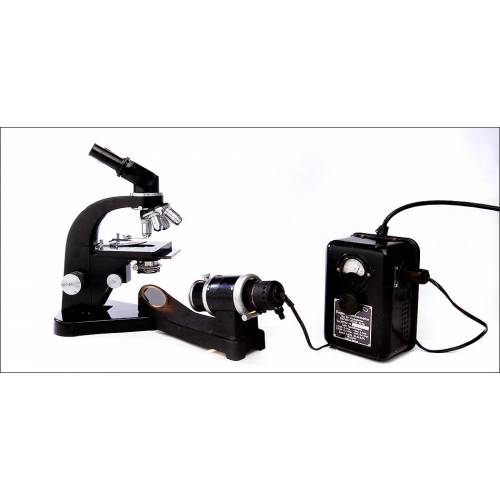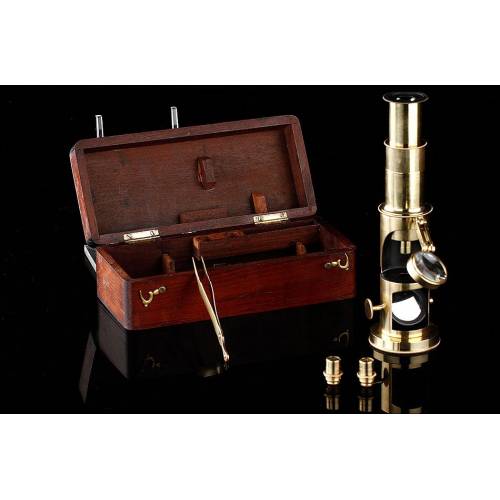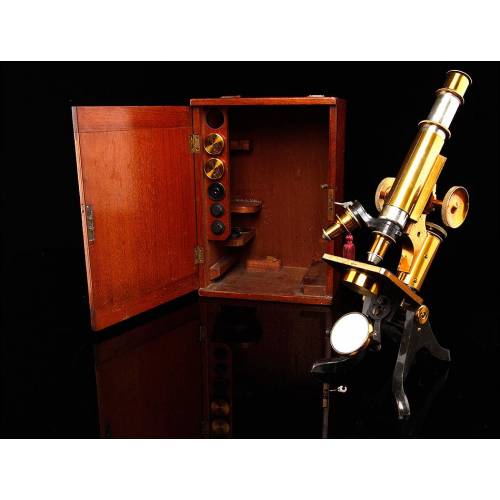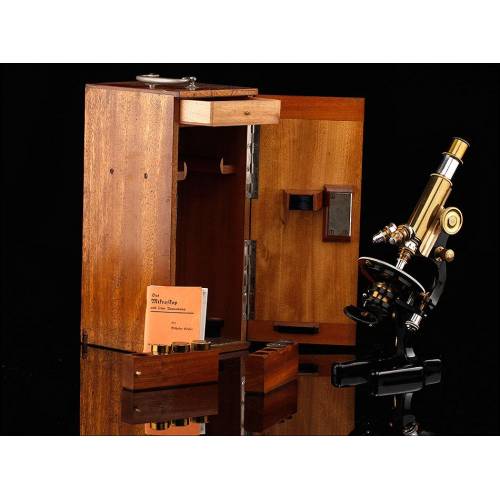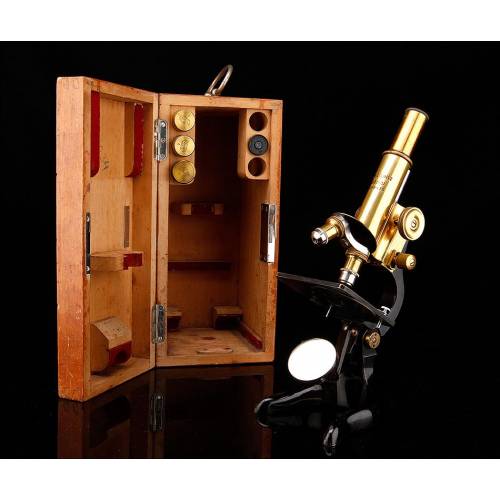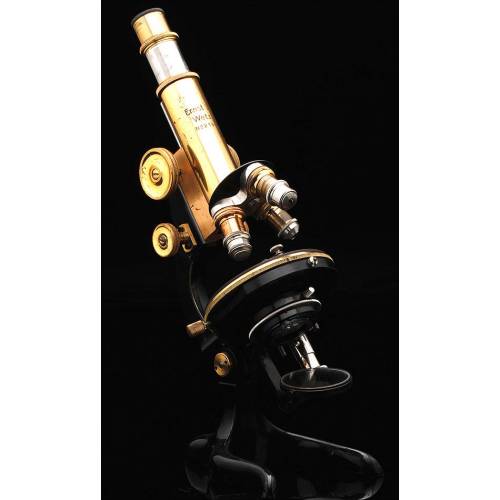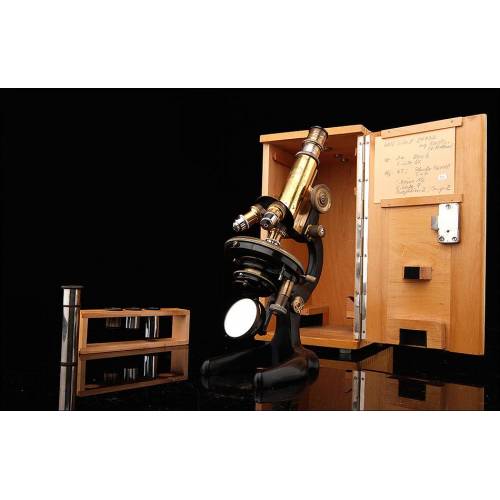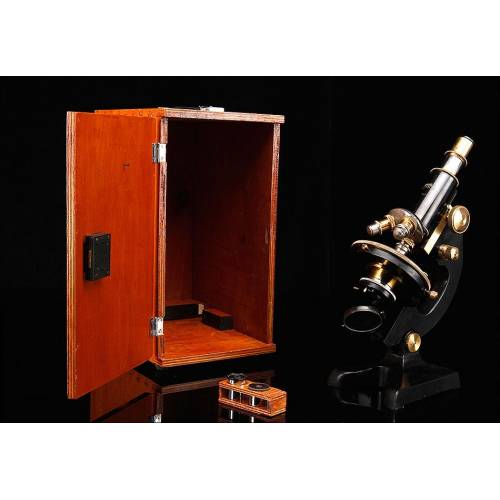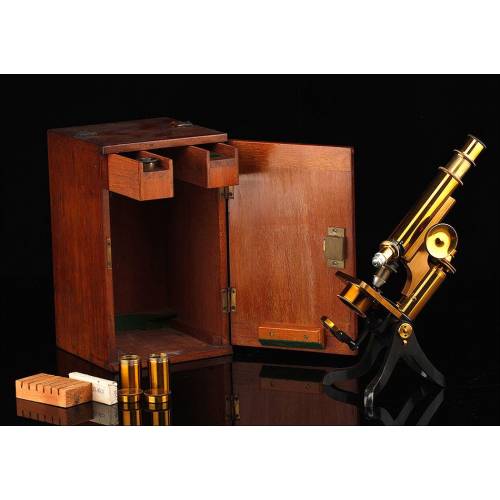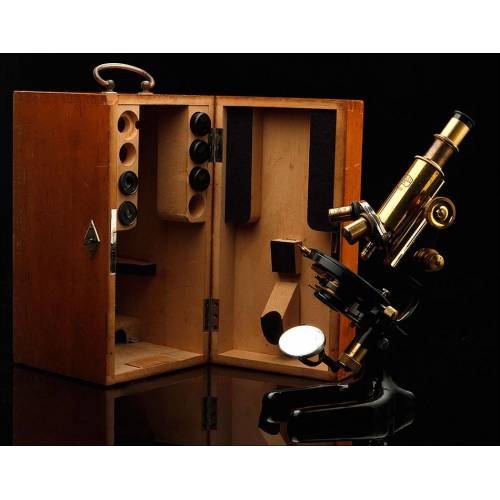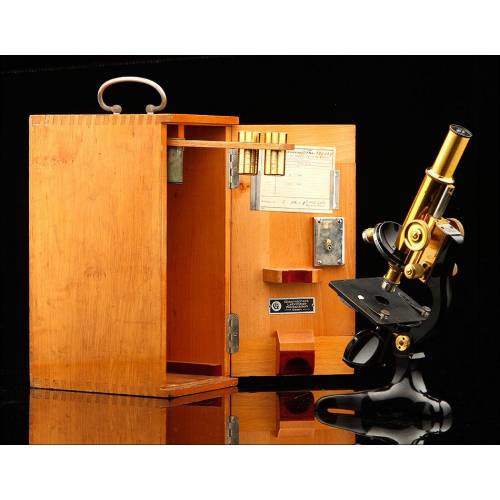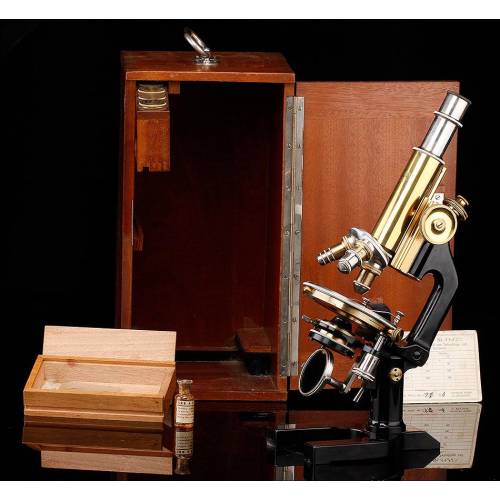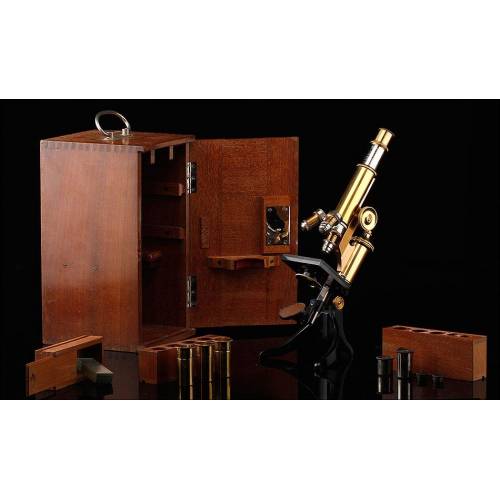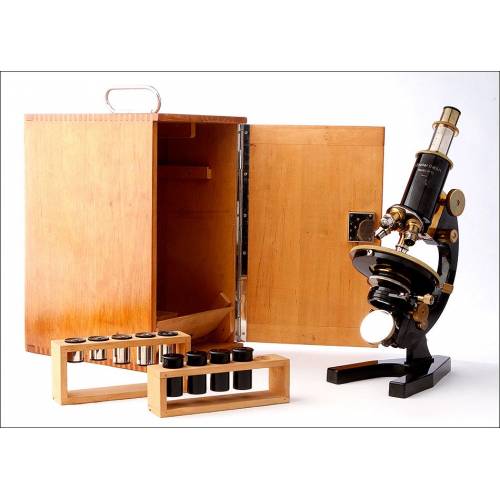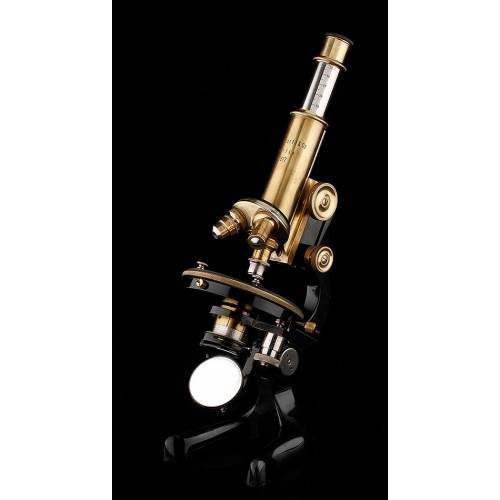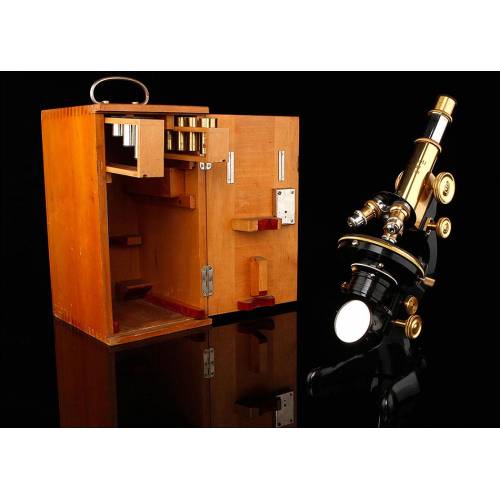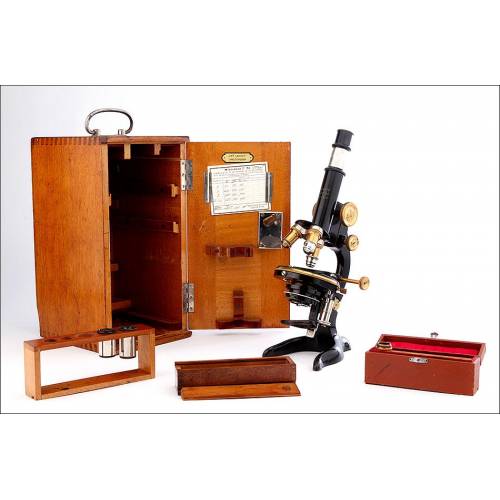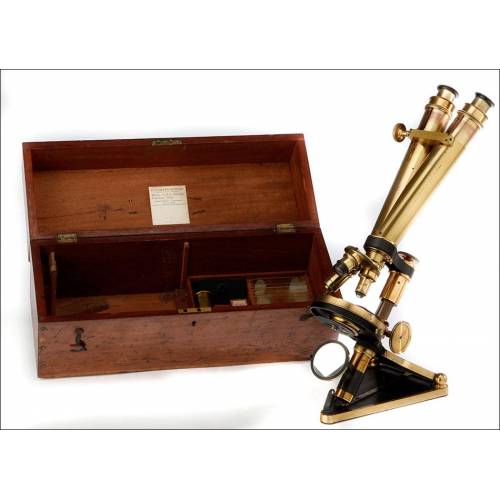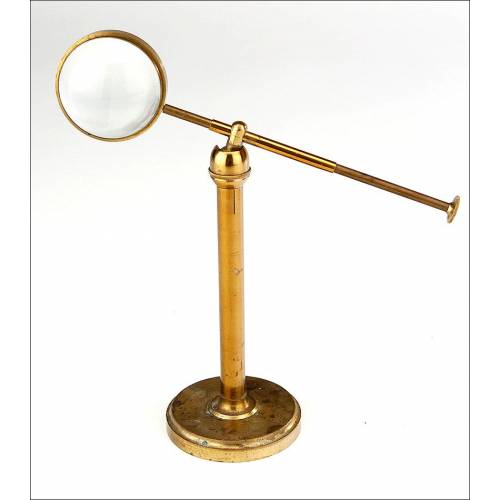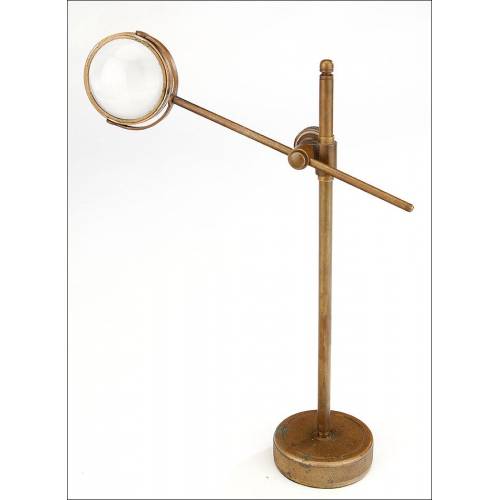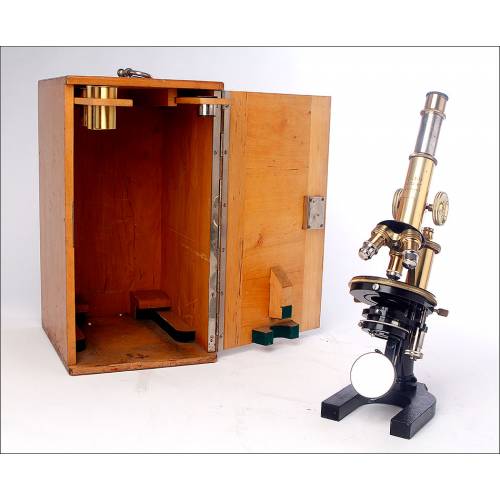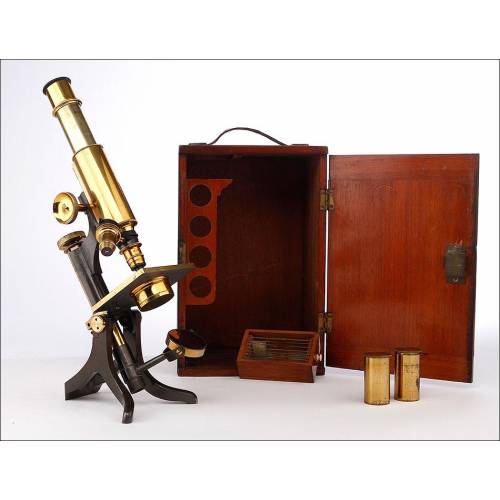C-387
Antique Leitz Wetzlar Microscope. Germany, 1917
Elegant German E. Leitz Wetzlar microscope in very good condition. With eyepiece and lenses. Case with original period key.
Sold!
Fine antique German microscope signed by Ernst Leitz Wetzlar, the prestigious optic material manufacturer that stood out for his quality lenses and microscopes. The instrument that we can see in the photographs is dated in the early 20th century (more precisely 1917) and remains in great condition. It comes in its original wooden case which preserves the ancient key and the lock in perfect working order. The case also contains an eyepiece and three lenses, the latter dated in the 1950s. The microscope keeps all its original component parts, including a diaphragm in excellent condition. It is a fully functional instrument that can still be used to watch samples. The microscope shows off a classic and nice design with a black-lacquered cast-iron horseshoe-shaped foot. The black finish remains in very good condition. The top part of the piece is made of brass: the metal looks shiny and polished, with no traces of rust and preserving the original transparent lacquered finish. The lenses and the eyepiece are made of silvery metal. The turret bears the engraved manufacturers name, E. Leitz Wetzlar, and the serial number Nº 131578. This number is also engraved in the wooden case and we can also see it handwritten in the paper label stuck inside the cases door. This label also bears the date of manufacturing. The case is made of solid mahogany wood, with wonderful and delicate dovetail joints. For its stylized design, functionality and history, this antique E. Leitz Wetzlar microscope is a piece worthy of inclusion in a science museum. Measurements: Height: 14.17 in / 36 cm.Ernst Leitz Wetzlar History The beginnings of the famous optic material manufacturing company named Ernst Leitz Wetzlar can be found in the first half of the 19th century, when the mechanic and selft-taught mathematician Carl Kellner founded the Carl Kellner Optisches Institut in Wetlzar, Germany. After his early death his widow maintained the business, and in 1864 the mechanical engineer Ernst Leitz entered the company. Just five years later, Leitz took control of the firm and changed its name for Ernst Leitz Wetzlar. Leitz led the company to success after introducing improvements such as serial production, raising sales volume rapidly after 1871. Leitz microscopes included technical improvements that increased their quality; by the late 19th century the company already had a worldwide reputation. Ernst Leitz died in 1920 and the leadership of the firm passed to his son. As well as for their microscopes and optic material, Leitz became hugely famous for their famous Leica cameras (abbreviation of Leitz Camera).

